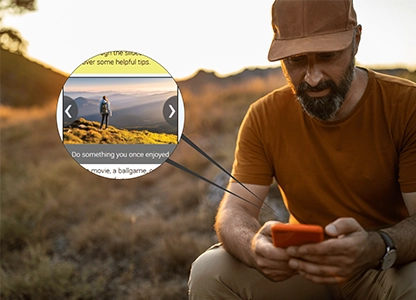Home » News & Resources » Website Development » The Future of Web Development Trends

The Future of Web Development Trends
Web development trends have evolved a lot in the past 30 years. In the beginning, it was based on the development of pages and websites for the Internet, Intranet and Extranet. Mostly text, some images, and very few videos or sounds.

The Future of Web Development Trends
Web development trends have evolved a lot in the past 30 years. In the beginning, it was based on the development of pages and websites for the Internet, Intranet and Extranet. Mostly text, some images, and very few videos or sounds.
The Future of Web Development Trends
Published: 11/12/2022

Web development trends have evolved a lot in the past 30 years. In the beginning, it was based on the development of pages and websites for the Internet, Intranet and Extranet. Mostly text, some images, and very few videos or sounds.
Nowadays, it is way more complex, and versatile. Videos are very prevalent in this web development area; as well as dynamic apps. Many new technlogies have surfaced over the recent years.
Also, some old technologies withstood the test of time; such as JavaScript. The funny part of it was its creation; which was done in only 10 days. We also still have HTML which is the backbone of websites; and it has evolved greatly with HTML5. At this time, there are mentions of a possible HTML6 coming our way with new features.
Below are some of the web development trends that have emerged, and will be more prevalent in the future.
Single Page Website
Although not for everyone, single web page websites have become a trend for many users. Instead of having several pages to maintain, the focus is on the only page of the site. This makes things more simple, better user experience (if done right), and the overall message of the site doesn't get lost in the pages of information.
Accelerated Mobile Pages (AMP)
AMP is an HTML framework optimized for mobile web browsing and its purpose is to help pages load faster. AMP pages are usually seen when viewing search results on a mobile device. If the search results have a lighting bolt icon, these pages are loading with AMP.
Voice Search
With the introduction of new technologies in the past years such as mobile devices, Echo, Siri, and Smart TVs, voice search has become prevalent in our daily lives. It provides a level of convenience for the user; eliminating the need to type things when searching for something. This has made speech recognition technology boom in the last years; and this is an additional reason search engine optimization is so important.
Headless CMS
While traditional CMS is where we have pieces of content that is eneted into a page template, headless CMS is about having the content repository separated from the presentation leayer This allows the user to manage content in one place, and publish content across any frontend; using APIs.
Motion UI
Motion UI is a tool; a Sass library that creates CSS transitions and animations. It's a CSS file with many premade animations and can be built upon. It also contains a JavaScript library to trigger the transitions. It's similar to the now defunct Flash; without the complexity. With Motion UI, user experience is upleveled.
AI/Chatbots
Have you noticed when you visit some of the websites, it has a chat service that pops up in case you have questions? These are AI chatbots. Many companies are implementing these on their website or messaging applications in response to real-time user interactions. This helps improve user experience whil reducing traditional support costs.
All these, and other technologies are becoming more prevalent in the world of web development; both for websites and apps. Combining these new technologies, with other ones that have withstanded the tests of time; to create a powerful web product.
Categories
Digital LearningExperience Design
SEO Tips
User Experience
Website Development
Transit Display
AV Integration


